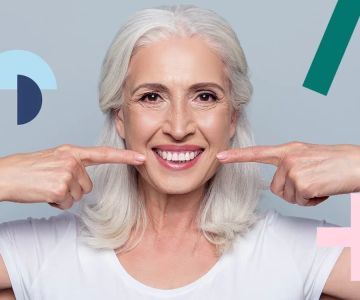The Origins of Oralism in Deaf Education
Oralism is an educational approach focused on teaching deaf children to speak and lip-read instead of using sign language. This method became widely popular in the 19th and early 20th centuries, particularly in the United States and Europe. Understanding who taught deaf children using oralism requires looking back at the pioneers and educators who championed speech-focused instruction as the primary way to integrate deaf individuals into hearing society.
The roots of oralism trace to early educators who believed that spoken language was essential for deaf children’s social and academic success. This contrasted with manualism, which emphasized sign language as the natural language of deaf communities.
1. Early Advocates and Pioneers of Oralism
One of the earliest proponents of oralism was Samuel Heinicke, a German educator in the 18th century who founded the first oral school for the deaf. Heinicke’s approach was rigorous and focused on teaching speech and lip-reading through constant repetition and practice, rejecting sign language entirely.
In the United States, educators like Alexander Graham Bell became influential figures advocating oralism. Bell, famous for inventing the telephone, dedicated much of his life to teaching deaf children to speak and read lips, believing that oral communication was key to their inclusion in mainstream society. His work helped establish oralism as the dominant educational method for decades.
2. The Role of Oralist Teachers in Deaf Children’s Education
Oralist teachers specialized in guiding deaf children through speech therapy, articulation exercises, and lip-reading training. Their role was demanding; they had to be patient, skilled, and creative to help children overcome the challenges of learning spoken language without hearing.
These educators often used intensive drills and encouraged parents to participate actively in their child’s speech development at home. The oralist approach emphasized auditory training using hearing aids and residual hearing when possible, enhancing speech recognition and production.
3. Challenges and Criticisms Faced by Oralism Teachers
Despite its popularity, oralism faced criticism for its limitations. Many deaf individuals struggled to acquire natural language fluency solely through speech and lip-reading, which can be difficult and exhausting. The strict exclusion of sign language was controversial and seen by some as denying deaf culture and identity.
Teachers who promoted oralism often had to navigate these tensions, balancing the expectations of schools, parents, and deaf students. Some oralist educators adapted their methods to include signed systems or total communication to better support learning.
The Impact of Oralism on Deaf Education and Community
Oralism shaped deaf education in the United States for over a century, influencing curriculum, teacher training, and societal attitudes toward deafness. While it helped many deaf children develop speech skills, it also sparked debates about language access and cultural recognition that continue today.
Modern deaf education increasingly values bilingual approaches, combining sign language and spoken language to meet diverse needs. However, the legacy of oralism remains an important chapter in understanding how deaf children were taught and how educators dedicated themselves to their progress.
Stories of Oralism’s Influence and Educator Dedication
One notable story is that of Helen Keller, who benefited from a blend of communication methods, including oral techniques, to overcome the challenges of deafblindness. Her teacher, Anne Sullivan, worked tirelessly with her on speech and lip-reading, exemplifying the devotion of oralist educators.
Similarly, many oralist teachers in specialized schools across America formed close bonds with their students, celebrating breakthroughs in speech even when progress was slow. These human stories add depth and realism to the history of oralism’s role in deaf education.
Continuing Education and Resources for Families and Educators
Families seeking guidance on oralism and deaf education options today can find valuable support through specialized programs and professional advice. Resources like Dentistry Toothtruth provide trusted information on health and communication services, helping parents make informed choices for their children’s education and well-being.
Understanding the history and teachers behind oralism enriches the conversation about inclusive and effective deaf education for future generations.






 Innovate Dental4.0 (142 review)
Innovate Dental4.0 (142 review) Macadam Dental4.0 (105 review)
Macadam Dental4.0 (105 review) Bergen Orthodontics5.0 (686 review)
Bergen Orthodontics5.0 (686 review) Village Dental - North Raleigh4.0 (1577 review)
Village Dental - North Raleigh4.0 (1577 review) Johnson Ebenezer DDS4.0 (12 review)
Johnson Ebenezer DDS4.0 (12 review) South Mississippi Smiles - Gulfport4.0 (454 review)
South Mississippi Smiles - Gulfport4.0 (454 review) The Importance of Oral Health Education During Pregnancy for a Healthy Pregnancy
The Importance of Oral Health Education During Pregnancy for a Healthy Pregnancy Best Tips for Brushing Your Teeth Properly for Healthy Gums: Essential Techniques for Oral Health
Best Tips for Brushing Your Teeth Properly for Healthy Gums: Essential Techniques for Oral Health Why Skipping Dental Checkups Can Lead to Bigger Oral Health Problems
Why Skipping Dental Checkups Can Lead to Bigger Oral Health Problems Advantages of Porcelain Dental Restorations
Advantages of Porcelain Dental Restorations How Can Diabetes Cause Tooth and Gum Problems? Preventing and Managing Oral Health Issues
How Can Diabetes Cause Tooth and Gum Problems? Preventing and Managing Oral Health Issues Healthy Habits for Promoting Good Oral Health and Hygiene: Tips for a Healthy Smile
Healthy Habits for Promoting Good Oral Health and Hygiene: Tips for a Healthy Smile